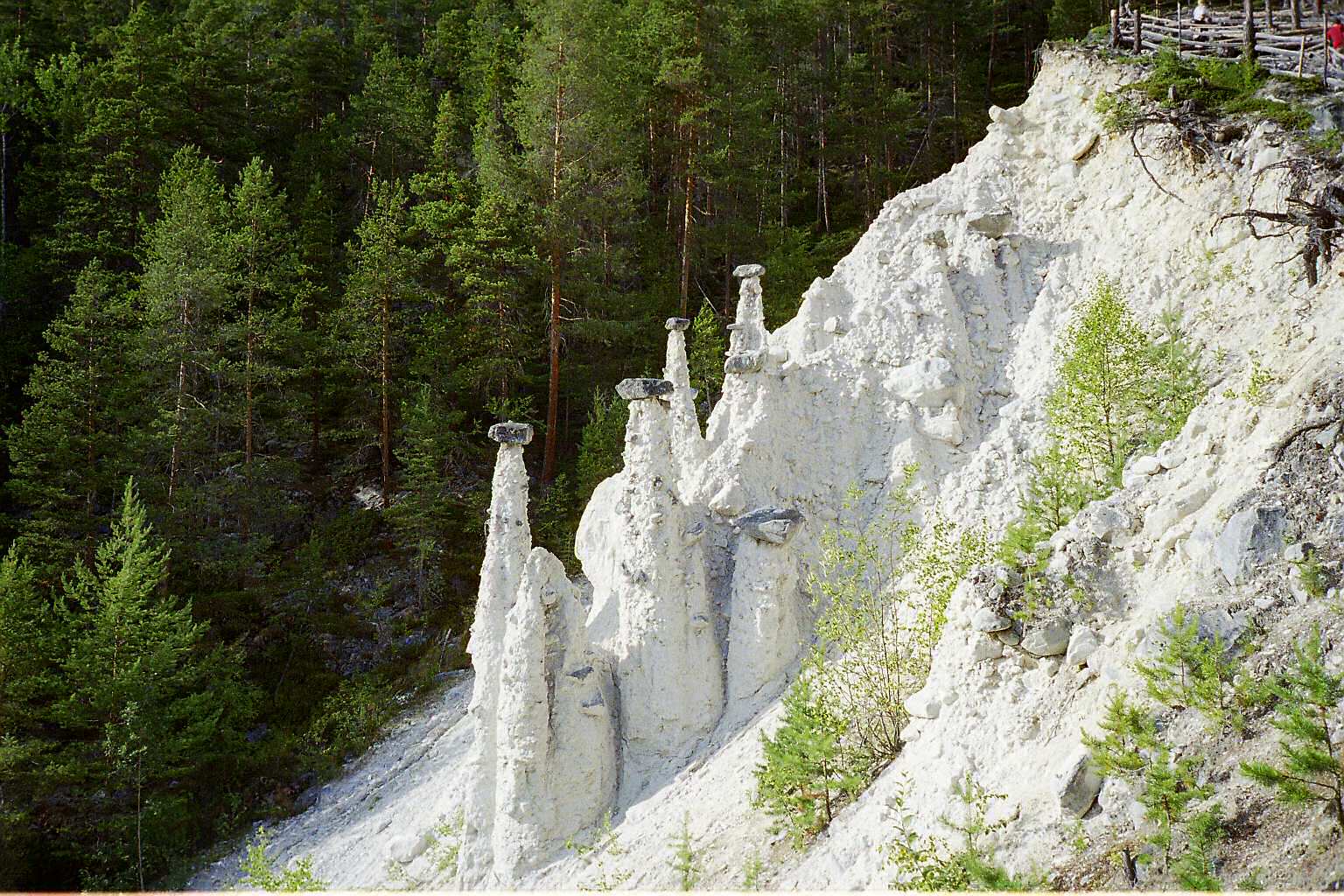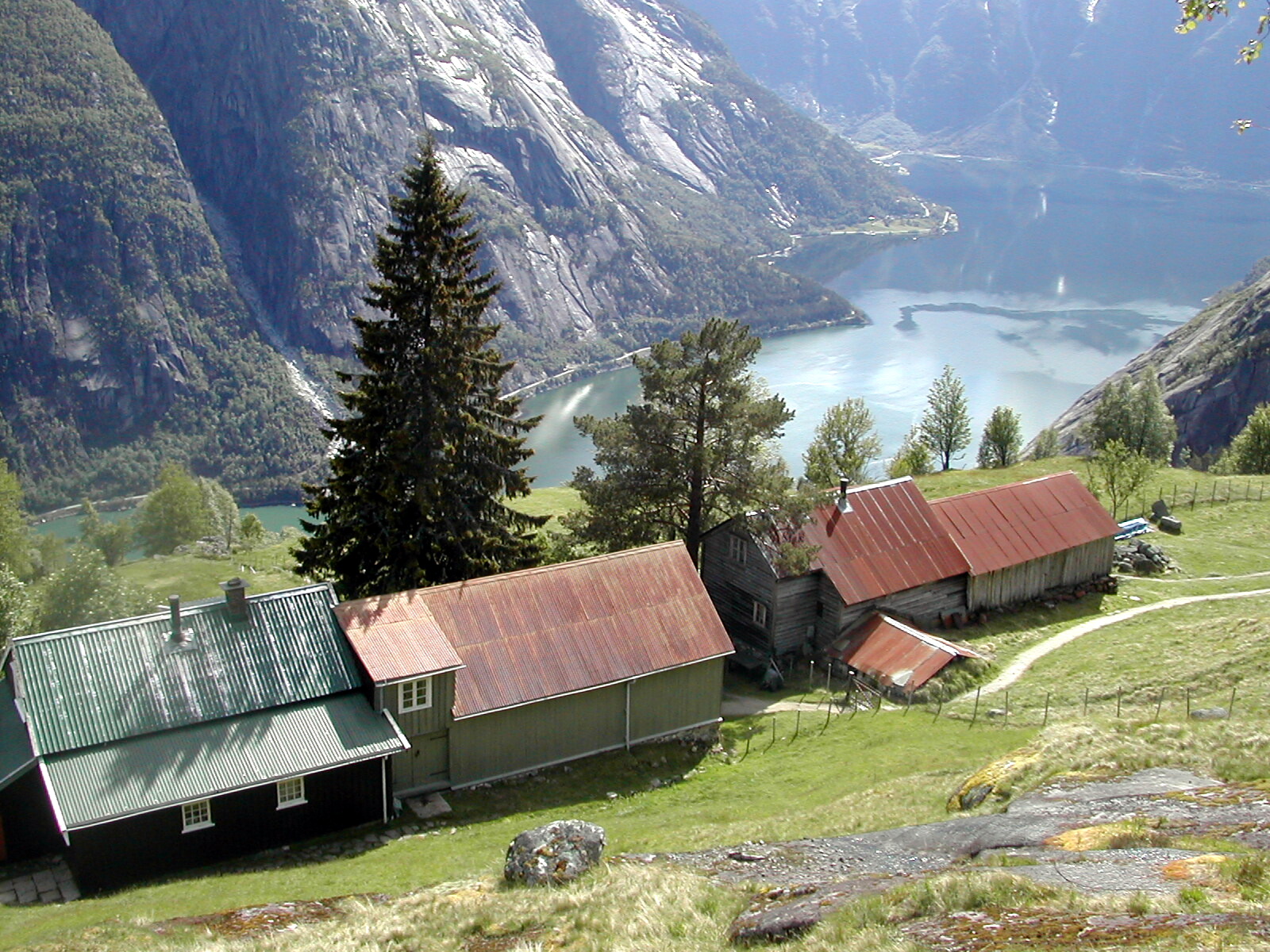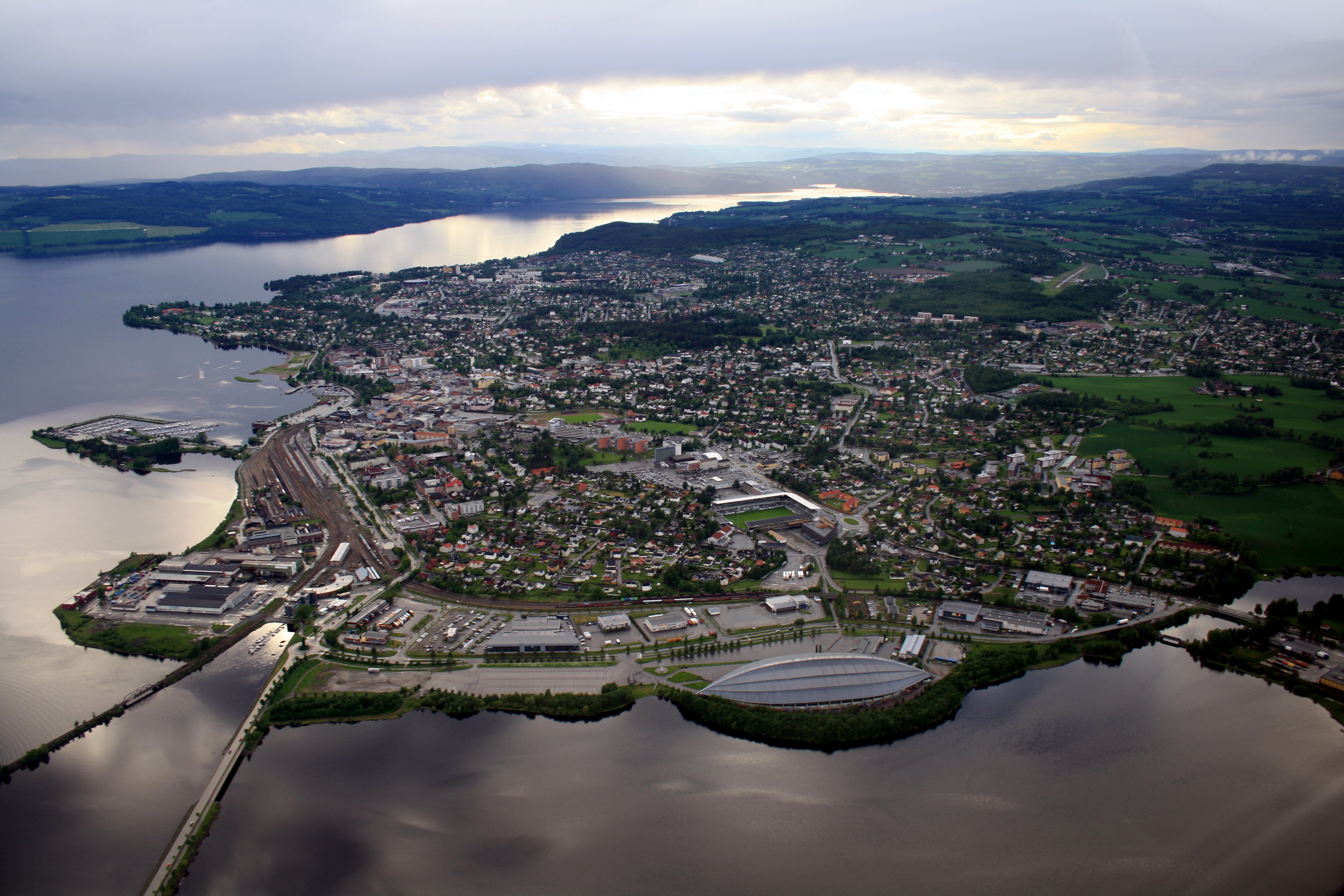|
Vågå
Vågå () is a municipality in Innlandet county, Norway. It is located in the traditional district of Gudbrandsdal. The administrative centre of the municipality is the village of Vågåmo. Other village areas in Vågå include Lalm and Bessheim. The municipality is the 73rd largest by area out of the 356 municipalities in Norway. Vågå is the 212th most populous municipality in Norway with a population of 3,591. The municipality's population density is and its population has decreased by 4% over the previous 10-year period. General information The prestegjeld of ''Vaage'' was established as a municipality on 1 January 1838 (see formannskapsdistrikt law). On 1 January 1908, the municipality was divided into three parts. The northeastern part of Vågå (population: 2,287) became Sel Municipality, the southeastern part (population: 1,241) became Hedalen Municipality, and the remaining areas in the west (population: 2,953) remained as Vågå municipality. During the 1960s, th ... [...More Info...] [...Related Items...] OR: [Wikipedia] [Google] [Baidu] |
Vågå Church
Vågå Church ( no, Vågåkyrkja) is a historic stave church. It is a parish church of the Church of Norway in Vågå Municipality in Innlandet county, Norway. It is located in the village of Vågåmo. It is the church for the Vågå parish which is part of the Nord-Gudbrandsdal prosti ( deanery) in the Diocese of Hamar. The brown, wooden church was built in a cruciform design in 1627 by the architect Werner Olsen. The church seats about 250 people. History The first church in Vågåmo was a wooden stave church that was built during the middle of the 12th century, possibly around the year 1150. The building had a rectangular nave and a narrower, rectangular chancel. It was originally dedicated to St. Peter. The prior rectory was formerly called Ullinsyn. The older name of the site may show that even in pagan times, the location had been in use for worship. In 1625-1627, the old church was completely rebuilt as a wooden cruciform church. The salvageable materials from the old c ... [...More Info...] [...Related Items...] OR: [Wikipedia] [Google] [Baidu] |
Vågåmo
Vågåmo is the administrative centre of Vågå Municipality in Innlandet county, Norway. The village is located along the Otta River, at the eastern end of the lake Vågåvatn in the Ottadalen valley. The Norwegian National Road 15 passes through the village. The village has a population (2021) of 1,487 and a population density of . Vågåmo is home to a local museum, the ''Jutulheimen Bygdemuseum'', and to the historical Klones farm which is also the location of the Nord-Gudbrandsdalen Upper Secondary School (videregående skole) which specializes in agriculture Agriculture or farming is the practice of cultivating plants and livestock. Agriculture was the key development in the rise of sedentary human civilization, whereby farming of domesticated species created food surpluses that enabled people t .... The Klones farm dates back to the 15th century and has been the location of the school since 1919. There are also many horses and a store named Jutulbue there. V� ... [...More Info...] [...Related Items...] OR: [Wikipedia] [Google] [Baidu] |
Vågåvatn
Vågåvatn or Vågåvatnet is a lake located in Lom and Vågå municipalities in Innlandet county, Norway. The lake is part of the river Otta, which begins in Skjåk municipality, flows into lake Vågåvatn. It then exits the Vågåvatn at Vågåmo and continues its journey through the Ottadalen valley before leaving Vågå municipality to meet the Gudbrandsdalslågen river at the town of Otta in Sel municipality. The lake sits at an elevation of above sea level. The lake is one of the 200 largest lakes in Norway. See also *List of lakes in Norway This is a list of lakes and reservoirs in Norway, sorted by county. For the geography and history of lakes in that country, see Lakes in Norway, including: * List of largest lakes in Norway * List of deepest lakes in Norway Akershus * Bjø ... References Vågå Lom, Norway Lakes of Innlandet {{Innlandet-lake-stub ... [...More Info...] [...Related Items...] OR: [Wikipedia] [Google] [Baidu] |
Lalm
Lalm is a village in Vågå Municipality in Innlandet county, Norway. The village is located in the Ottadalen valley, at the southern end of the lake Lalmsvatnet, a lake on the Otta River. The village has a population (2021) of 328 and a population density of . Name In the Middle Ages the place was known as Ladalm. The name is a reference to the fact that winter hay and feed for animals was stored there. History From early in the Middle Ages Lalm was established as an early industrial center. Millstone production Written sources indicate that in the 15th century there was millstone production at Lalm, although it is possible the production dates back to the Viking era. From ''Kvennberget''—which translates roughly to the ''mill-hill''—millstones were delivered around Norway and even internationally. Kvennberget gained protected status as a cultural treasure in 1987. Until 1640 Tolstad and Kvennberget were ''krongods''. Anyone was free to produce as many millstones as t ... [...More Info...] [...Related Items...] OR: [Wikipedia] [Google] [Baidu] |
Sel Municipality
Sel is a municipality in Innlandet county, Norway. It is located in the traditional district of Gudbrandsdal. The administrative centre of the municipality is the town of Otta. The municipality also includes several notable villages including Bjølstad, Dale, Høvringen, Nord-Sel, Sandbumoen, Sjoa, and Skogbygda. The municipality is the 130th largest by area out of the 356 municipalities in Norway. Sel is the 172nd most populous municipality in Norway with a population of 5,531. The municipality's population density is and its population has decreased by 7.7% over the previous 10-year period. General information The new municipality of Sel was established on 1 January 1908 when Vågå Municipality was divided into three. The northeastern part became the new Sel Municipality (population: 2,287), the southeastern part became the new Heidal Municipality (population: 1,241) and the western part continued as Vågå Municipality (population: 2,953). During the 1960s, there ... [...More Info...] [...Related Items...] OR: [Wikipedia] [Google] [Baidu] |
Besseggen
Besseggen or Besseggi is a mountain ridge in Vågå Municipality in Innlandet county, Norway. The tall mountain ridge is located in the Jotunheimen mountains within Jotunheimen National Park. The mountain sits about southwest of the village of Vågåmo and about northwest of the village of Beitostølen. The mountain ridge is surrounded by several other notable mountains including Veslfjellet to the east and Besshø to the northwest. The ridge runs between the lakes Gjende and Bessvatnet. The walk over Besseggen is one of the most popular mountain hikes in Norway. About 30,000 people walk this trip each year. The route over Besseggen starts at Gjendesheim, up to the trails highest point, Veslfjellet (at ), down Besseggen, further over the relatively flat area Bandet (at the foot of Besshø), and ends at Memurubu, where one may take the regularly scheduled ferry route back to Gjendesheim. Many choose to do the hike in the other direction by starting at Memurubu after fi ... [...More Info...] [...Related Items...] OR: [Wikipedia] [Google] [Baidu] |
List Of Municipalities Of Norway
Norway is divided into 11 administrative regions, called county, counties (''fylker'' in Norwegian, singular: ''fylke''), and 356 municipality, municipalities (''kommuner/-ar'', singular: ''kommune'' – cf. Municipality#communes, communes). The capital city Oslo is considered both a county and a municipality. Municipalities are the atomic unit of local government in Norway and are responsible for primary education (until 10th grade), outpatient health services, senior citizen services, unemployment and other social services, zoning, economic development, and municipal roads. Law enforcement and Church of Norway, church services are provided at a national level in Norway. Municipalities are undergoing continuous consolidation. In 1930, there were 747 municipalities in Norway. As of 2020 there are 356 municipalities, a reduction from 422. See the list of former municipalities of Norway for further detail about municipal mergers. The consolidation effort is complicated by a n ... [...More Info...] [...Related Items...] OR: [Wikipedia] [Google] [Baidu] |
Heidal
Heidal or Heidalen is a valley in Sel Municipality in Innlandet county, Norway. The U-shaped valley follows the river Sjoa which begins in the nearby Jotunheimen mountains eastward until it joins the Gudbrandsdalslågen river in the main valley which runs through the region, Gudbrandsdalen. The western end of the Sjoa river valley is in Vågå Municipality and there, it is called the Sjodalen valley. From 1908-1965, the Heidal valley was an independent municipality called Heidal, and since 1965, it has been a part of Sel Municipality. The main urban area in the valley is the village of Bjølstad. The valley runs northwest from the village of Sjoa for about to the village of Bjølstad where the valley curves to the southwest/south for about before entering Vågå municipality. After entering Vågå, the valley becomes much narrower as it enters into the Jotunheimen mountains and heading to the source of the river, the large lake Gjende. History In the year 1177, Iv ... [...More Info...] [...Related Items...] OR: [Wikipedia] [Google] [Baidu] |
Eidfjord
Eidfjord is a municipality in Vestland county, Norway. The municipality is located in the traditional district of Hardanger. The administrative centre of the municipality is the village of Eidfjord, where the majority of the municipal population lives. The other major population centre in the municipality is the village of Øvre Eidfjord. Eidfjord is situated at the end of the Eid Fjord, an inner branch of the large Hardangerfjorden. The village of Eidfjord is a major cruise ship port of call. Eidfjord has several tourist sites, like the Sima Power Plant which is built into the mountain itself, the Måbødalen valley, and the Vøringsfossen waterfall which has a free fall of . Large parts of the Hardangervidda (Europe's largest mountain plateau) are located in Eidfjord. The Hardangervidda Natursenter, a visitors centre and museum for Hardangervidda National Park, is located in Øvre Eidfjord. The municipality is the 57th largest by area out of the 356 municipalities in ... [...More Info...] [...Related Items...] OR: [Wikipedia] [Google] [Baidu] |
Innlandet
Innlandet is a county in Norway. It was created on 1 January 2020 with the merger of the old counties of Oppland and Hedmark (the municipalities of Jevnaker and Lunner were transferred to the neighboring county of Viken on the same date). The new county has an area of , making it the second largest county in Norway after Troms og Finnmark county. The county name translates to "The Inland" which reflects that the county is the only landlocked county in Norway. The county covers approximately 17% of the total area of the mainland area of Norway. It stretches from the Viken county and the Oslo region in the south to Trøndelag county in the north. In the northwest, the county borders Møre og Romsdal and the Vestland county in the west. To the east the county borders the Sweden, Swedish counties of Värmland and Dalarna. The northern and western areas of the county are dominated by the mountainous areas Rondane, Dovrefjell and Jotunheimen. The Galdhøpiggen mountain is located w ... [...More Info...] [...Related Items...] OR: [Wikipedia] [Google] [Baidu] |
Gudbrandsdal
Gudbrandsdalen (; en, Gudbrand Valley) is a valley and traditional district in the Norwegian county of Innlandet (formerly Oppland). The valley is oriented in a north-westerly direction from Lillehammer and the lake of Mjøsa, extending toward the Romsdalen valley. The river Gudbrandsdalslågen (Lågen) flows through the valley, starting from the lake Lesjaskogsvatnet and ending at the lake Mjøsa. The Otta river which flows through Otta valley is a major tributary to the main river Lågen. The valleys of the tributary rivers such as Otta and Gausa (Gausdal) are usually regarded as part of Gudbrandsdalen. The total area of the valley is calculated from the areas of the related municipalities. Gudbrandsdalen is the main valley in a web of smaller valleys. On the western (right hand) side there are long adjacent valleys: Ottadalen stretches from Otta village, Gausdal some from Lillehammer and Heidal some from Sjoa. Gudbrandsdalen runs between the major mountain ranges of Norw ... [...More Info...] [...Related Items...] OR: [Wikipedia] [Google] [Baidu] |
Formannskapsdistrikt
() is the name for Norwegian local self-government districts that were legally enacted on 1 January 1838. This system of municipalities was created in a bill approved by the Parliament of Norway and signed into law by King Carl Johan on 14 January 1837. The ''formannskaps'' law, which fulfilled an express requirement of the Constitution of Norway, required that every parish ( no, prestegjeld) form a ''formannsskapsdistrikt'' (municipality) on 1 January 1838. In this way, the parishes of the state Church of Norway became worldly, administrative districts as well. (Although some parishes were divided into two or three municipalities.) In total, 396 ''formannsskapsdistrikts'' were created under this law, and different types of ''formannskapsdistrikts'' were created, also: History The introduction of self government in rural districts was a major political change. The Norwegian farm culture (''bondekultur'') that emerged came to serve as a symbol of nationalistic resistance to t ... [...More Info...] [...Related Items...] OR: [Wikipedia] [Google] [Baidu] |




